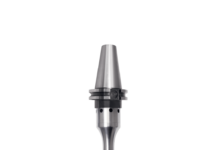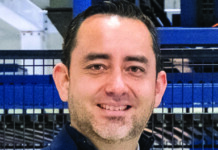
The die sinking EDM machine is the favorite choice for precision mold making, and for good reason. No process can so easily handle the ultra-hard alloys used for injection molds, which are expected to produce sometimes millions of parts in their lifetimes. Someone unfamiliar with electronic discharge machining might think it science fiction – the act of vaporizing minuscule bits of metal by equally tiny lightning bolts while underwater does have a certain surreal appeal to it.
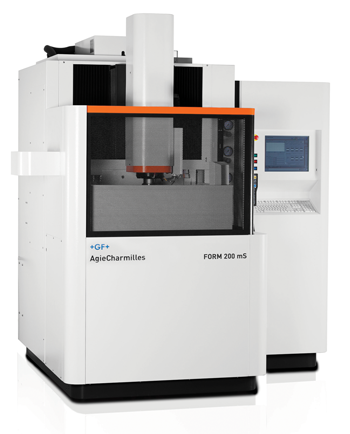 In fact, EDM has been around since the 1960’s. The very first commercially available machine came on the market in 1967, a wire variety developed and produced in the Soviet Union. Since then, EDM technology has come into its own. Advancements in CNC controls have made machines smarter and more communicative while accelerating performance. Materials science has created more sophisticated consumables, and proliferation of the technology has made more EDM machine makes, models and varieties available and at more affordable costs.
In fact, EDM has been around since the 1960’s. The very first commercially available machine came on the market in 1967, a wire variety developed and produced in the Soviet Union. Since then, EDM technology has come into its own. Advancements in CNC controls have made machines smarter and more communicative while accelerating performance. Materials science has created more sophisticated consumables, and proliferation of the technology has made more EDM machine makes, models and varieties available and at more affordable costs.
While wire EDM machines cut along a path which passes completely through the part, while sinker EMD machines utilize a hollow conductive rod to remove metal from the surface of a workpiece, allowing them to produce deep cavities and contoured surfaces. In the past year, GFMS subsidiary AgieCharmilles has introduces several advancements to its die sinker line focused around efficiency and precision of production, especially in mold making operations. Wear Partitioning uses intelligent tool management to maximize sinker life without increasing burn time, iGAP technology can reduce the effects of lateral sparking which can pit the sidewalls of a mold cavity, and 3DS technology introduces extremely fine surface texturing – critical for peak mold performance.
All three new functions are a result of new 100 percent-digital generator technology from AgieCharmilles available on FORM 200/300/400 sinker EDMs. These sophisticated generators control the spark and the gap voltage during the EDM process, thus providing options when it comes to burn parameters to achieve different removal and finishing patterns. Together, these new technologies have helped GFMS redefine the standard in mold making.
Wear Partitioning
A sinker EDM generator function, Wear Partitioning offers a better alternative for electrode wear compensation. The function optimizes the use of electrodes, sharing the electrode wear among the mold cavities to increase part quality and dimensional consistency. And while actual burn times remain unchanged, the function helps reduce the use of consumables. This is especially beneficial when electrodes are complex and require a lot of machining time to produce.
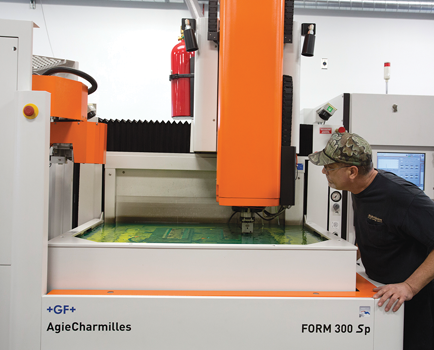 With Wear Partitioning, machining now happens setting by individual setting, and the EDM determines this alternative setting distribution as well as what electrode will be used when and in what sequence. It also indicates where to start in the cavities, when to switch the electrodes in and out, and what orbits to use with which electrode and for how long.
With Wear Partitioning, machining now happens setting by individual setting, and the EDM determines this alternative setting distribution as well as what electrode will be used when and in what sequence. It also indicates where to start in the cavities, when to switch the electrodes in and out, and what orbits to use with which electrode and for how long.
For example, a sinker EDM machine, using the generator function, can decide to enter the first cavity and orbit material out with the first electrode, then progress to the second and third finishing electrodes. Or it may rough out all the cavities with a roughing electrode – going from right to left, for instance – then switch to the semi-finishing or finishing electrodes – moving back from left to right.
Rough cutting in one direction and semifinishing in the other in such a fashion eliminates wasted machine movement and helps shorten part cycle times.
Wear Partitioning is only possible via 100 percent-digital EDM generator technology. The prerequisites for using Wear Partitioning are that cavities are equivalent in terms of depth, surface finish and required dimensional tolerances.
iGAP Technology
A new generator function of certain sinker EDMs can now vary the sparks between the fronts and sides of electrodes, as opposed to using the same spark the whole way through a burn. In traditional sinker EDMs, as burn speeds and spark power increase, so too does the risk of damage to the part surface, especially where cavity undersizes are tight.
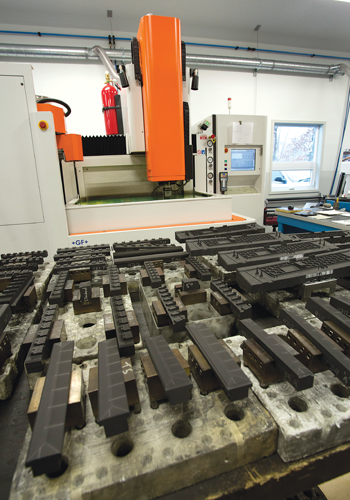 A big spark in the front of the sinker EDM electrode is acceptable because the undersize can be controlled with the Z axis. But on the sides of electrodes, the spark cannot be greater than the undersize because it destroys the sidewalls of the cavity. Therefore, the small undersize restricts the maximum power that can be used.
A big spark in the front of the sinker EDM electrode is acceptable because the undersize can be controlled with the Z axis. But on the sides of electrodes, the spark cannot be greater than the undersize because it destroys the sidewalls of the cavity. Therefore, the small undersize restricts the maximum power that can be used.
Digital generator technology allows the ISPG +iGAP function from GF Machining Solutions to not only keep electrode wear in check, but, most importantly, optimize cutting speeds. The technology applies the electrical current only when and where necessary to eliminate lateral sparking that historically creates disturbances on the sides of mold cavities.
iGAP allows the electrode to have maximum power in the front of the cavity without destroying the sidewalls or creating too big of a gap on the sides. This potentially doubles or even triples material removal rates over what is typically produced with small undersizes.
For instance, with a 0.2-mm undersize, the machine may enter the burn with only 32 Amps of power. With iGAP, that same machine can go in with 64 Amps, and without having to change the undersize.
To extend electrode life, the iGAP function’s higher potential amperages and lower “on” times translate into less wear when roughing. It should be noted, however, that the same generator technology without the iGAP function still reduces electrode wear, but does not increase the cutting speed as much.
3DS Technology
A further result of AgieCharmilles 100 percent-digital generators, a new sinker EDM function called 3DS reduces friction on the surface area of molds, including inside any small details and ribs. Molds fill quicker, shaving seconds off the molding process, and for manufacturers that make millions of injected-molded parts, this saves hours of cycle time and helps them produce hundreds of thousands of additional parts.
The resulting surface finishes of the new 3DS technology from GF Machining Solutions also reduce the chance of residue sticking to the mold after the plastic is injected. This is a problem that grows worse after repeated injections, leading to uneven surface finishes on parts.
While a polished surface finish may seem ideal for any mold, this is not always the case. A highly polished finish requires a great amount of pressure to inject the liquefied plastic into the mold. If the finish is too flat, or too smooth, the plastic sucks to the surface – like two pieces of glass with water in between them that stick together. This exceptionally strong suction effect slows the flow of plastic into the mold.
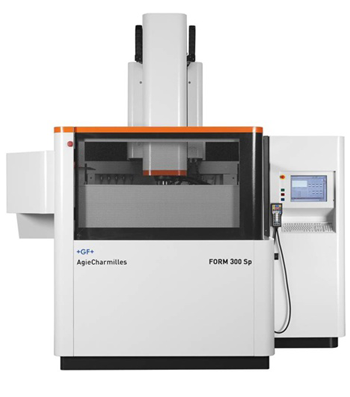 Additionally, greater ejection force is required to push the molded part out of the cavity because the smooth surface causes it to stick as well. And if the newly formed part is still warm and a bit soft, the ejector pins will push into it and deform its surface.
Additionally, greater ejection force is required to push the molded part out of the cavity because the smooth surface causes it to stick as well. And if the newly formed part is still warm and a bit soft, the ejector pins will push into it and deform its surface.
What the 3DS functionality does is smooth out the distance between the peaks and valleys on mold tooling surfaces, but not to a point where the peaks are eliminated. In a sense, 3DS stretches the surface RSM value, while the Ra value remains the same. And because the peaks are more spread out, the surface prevents sticking.
This optimized 3DS surface finish also ensures less force is needed to eject a molded part. And while tiny plastic particles may still be present, the amount is not enough to contaminate the surface.
Because of the reduced friction the 3DS technology produces, molds fill faster and parts actually eject quicker and effortlessly. Thus, mold makers need fewer ejector pins, which helps reduce machining and overall mold making lead times.
In operation, a sinker EDM with 3DS – after rough burning a mold cavity surface – follows the standard finishing operation but then activates the new function for the last two or three burn settings to impart the enhanced surface finish. The machine uses the same standard finishing electrode, and machining cycle time remains unchanged because instead of using the last standard finishing parameters, the 3DS setting is simply implemented. The 3DS feature can also be used on existing mold tooling surfaces.
3DS technology has thus far been successful. One GF Machining Solutions customer using 3DS technology recently reported a 30 percent reduction in maintenance costs. Plus, the company has been able to leave the mold in the molding press 30 percent longer without having to clean the mold surface and interrupt the production cycle.
This type of surface finishing has other applications outside of mold making. Any part that comes into contact with fluid, for example, benefits from advanced surfacing to facilitate fast and smooth flow of fluids.
For more information please visit:
www.gfms.com

